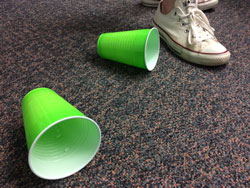According to information published on NJ.com, enrollment is falling across the state at many private colleges, although Monmouth does not seem to be one of the schools affected.
At schools nationwide, enrollment has been plummeting, especially at small and mid-size private schools. Many small private colleges are unable to offer the financial aid packages and academic perks that larger schools have; they also lack name recognition and may not have the national rankings that their larger competitors have been awarded.
According to an analysis done by NJ Advance Media, most of the traditional, private, four-year colleges and universities in New Jersey have lost students since 2009, while the public schools in the state have grown larger.
The highest-hit school was the College of Saint Elizabeth in Morristown. Between 2009 and 2014, data compiled by the state’s Office of the Secretary of Higher Education showed that their enrollment rate had plummeted by nearly 35 percent.
Other hard-hit schools included Georgian Court University, which lost 24 percent of enrolling students, Centenary College and Drew University, which both saw a drop of 21 percent, and Rider University, which saw a loss of 12 percent. Rider had recently cut 13 majors, which could be a possible cause as to what led to the drop in enrollment. These are all mid-to-small sized schools – some of the larger private colleges, such as Seton Hall University, Fairleigh Dickinson, and Monmouth either had only small decreases or kept their enrollment rates the same.
A report provided by Moody’s Investors Service, released in November, predicted that some of these small colleges would close and merge, especially in the next few years. The report pointed out that a majority ofsmall schools do not get the state funding or large endowments that the larger schools would; as a result, they are forced to depend almost entirely on tuition revenue, meaning that a drop in enrollment rates can cause them to quickly find themselves facing financial A. While many schools are offering admissions to more students, and are lowering their admission standards, the problem is still unsolved. While small and mid-size private schools are seeing an increase in applications and admittances, the enrollment rate still remians low.
“Enrollment declines and lost market share for smaller colleges continue to spur closures and mergers,” said Dennis Gephardt, Moody’s Vice President and Senior Credit Officer, to NJ.com. “Students increasingly opt for larger colleges with greater academic resources.”
Some schools are attempting to combat the problem by adding new majors. At the College of Saint Elizabeth, it was announced that it would go co-ed, having been the last remaining women’s college in the state. Some schools are also hoping to attract international students and transfer students from community colleges.
“I think it could be because of the price,” said sophomore chemistry major Lauren Lucia. “A lot of schools in New Jersey don’t offer in-state tuition discount like most states do, and a lot of the private universities are too expensive for most people to afford, especially if they don’t get scholarships or financial aid.”
An article written by USnews.com shows that this is not just an issue in New Jersey – college enrollment rates have been falling nationwide. In the Midwest, there were enrollment decreases in 11 of 12 states; the South saw a decrease in 13 of 17 states. Overall, there was a 2.6 percent decline in college enrollment in the Midwest, while the Northeast saw a decline of only 0.3 percent.
There is no one trend that the problem can be blamed on; instead, there are multiple causes.
Jason Dewitt, the research manager of the NSC Research Centered, attributed the decline mainly to the changing demographics of the student population, pointing out that since the size of graduating high school classes are decreasing, the pool of students able to go to college is becoming smaller. He also points out that there are economic factors at play.
DeWitt noted that different types of colleges have varying enrollment increases and decreases. While four-year, for-profit colleges have a drop of 9.7 percent, and two-year public colleges have a drop of 3.1 percent, the enrollment at four-year public colleges has increased by 0.3 percent, and the enrollment at four-year private non-profit colleges increased by 1.3 percent.
However, Monmouth University has hardly been affected by these decreased enrollment statistics. “We haven’t noticed a trend like that,” said Office of Admissions employee Laes Ortiz.
“Our numbers are going up. Two to three years ago, we had about 975 students enrolling in their freshman year; this year, we had over a thousand. We’re expanding our class sizes and we’re getting more enrolled students.”


